|
Chorale Melodies used in Bach's Vocal Works
In dich hab ich gehoffet, Herr |
|
Melody & Text | Use of the CM by Bach | Use of the CM by other composers |
| |
|
Melody & Text: |
|
"In dich hab ich gehoffet, Herr". Psalm 31. First published in the Form und ordnung Gaystlicher Gesang und Psalmen (Augsburg, 1533), and thence in Wackernagel, iii. p. 133, in 7 stanzas of 6 lines. It was included in V. Babst's Gesang-Buch (1545), and repeated in almost all the German hymnbooks up to the period of Rationalism. It is one of the best Psalm-versions of the Reformation period. Included in the Unverfälschter Liedersegen (1851), No. 629.
The English translation in common use is: In Thee, Lord, have I put my trust. A good translation, omitting st. vii., by Catherine Winkworth, in her Chorale Book for England (1863), No. 120. Other translations are: (1) "Lord, let me never be confoundit." In the Gude and Godly Ballates, ed. 1568, f. 82; ed. 1868, p. 141. (2) "Great God! in Thee I put my Trust." By J. C. Jacobi, 1725, p. 33 (1732, p. 116). Repeated in the Moravian Hymn Book (1754), pt. i., No. 118. (3) "Lord, I have trusted in Thy name." By Dr. H. Mills, 1856, p. 171. (4) "On Thee, O Lord, my hopes I lean." By N. L. Frothingham, 1870, p. 263. [Rev. James Mearns, M.A.]
Source: John Julian: Dictionary of Hymnology (1907), p 955 on Hymnary.org |
|
The melody, “In dich hab’ ich gehoffet, Herr,” was composed by Sethus Calvisius of Kallwitz (1556-1615), a predecessor of J.S. Bach as Thomaskantor in Leipzig. The melody was first published, along with the Hymn, by the Augsburg preacher Gregorius Sunderreitter in his Psalter, Davids Himlische Harpffen von neuwem auffgezogen (Nürnberg, 1581), a revision of his Augsburg Psalterium of 1574. It was there associated with Reissner’s Hymn, and again in Calvisius’s Hymni sacri Latini et germanici (Erfurt, 1594). In Johann Hermann Schein's Cantional (Leipzig, 1627) it appears in a form very similar to that in which J.S. Bach employs it.
J.S. Bach uses the melody elsewhere in the in the St Matthew Passion (BWV 244) (No. 38), and in the Christmas Oratorio (BWV 248) (No. 46), and in the Cantatas, Falsche Welt, dir trau ich nicht (BWV 52), for the 23rd Sunday after Trinity; and Gottes Zeit ist die allerbeste Zeit (BWV 106, the Actus Tragicus). In the Orgelbuchlein (N. xv. 113) the melody called “In dich hab’ ich gehoffet” is not by S. Calvisius, but is an Easter Hymn tune dating at least from the 15th century.
The words of the Choral are of Adam Reusner's Hymn (based on Psalm 31), “In dich hab’ ich gehoffet, Herr,” which was first published in Form und Ordnung Gaystlicher Gesang und Psalmen (Augsburg, 1533).
Source: Charles Sanford Terry: Johann Sebastian Bach, Bach’s Chorals, vol. 1 The Hymns and Hymn Melodies of the “Passions” and Oratorios [1915], p 25 |
|
Melody 1: Zahn 2461
Composer: Sethus Calvisius (Nürnberg, 1581) |
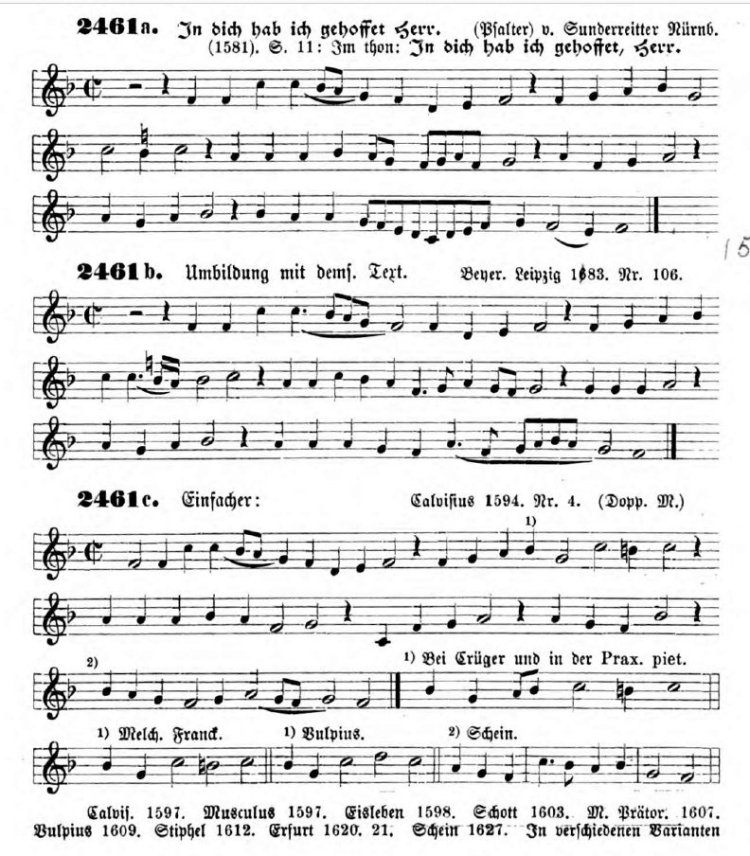
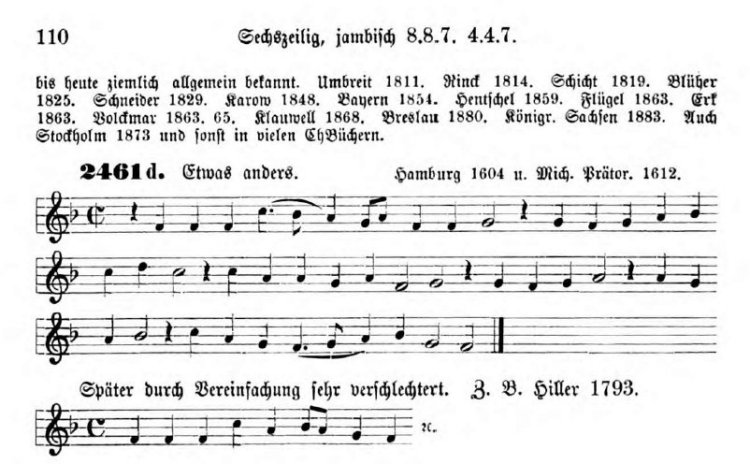 |
|
Melody 2: Zahn ?
Composer: Anon (pre-Reformation Easter melody, occurs in a 15th century ms. now in the Royal Library, Berlin). Attached to Adam Reusner’s In dich hab' ich gehoffet, Herr, in the Strasbourg Gros Kirchen Gesangbuch (1560). |
|
See under BWV 640 below |
| |
|
Text 1: In dich hab' ich gehoffet, Herr (NLGB 254; GH 606)
Author: Adam Reusner [Reusner] (1533), after Psalm 31 |
|
Text 2: Nun, liebe Seel, nun ist es Zeit
Author: Georg Weissel (1642) |
| |
| |
|
Hymnal versions Bach may have known: |
|
Melody 1: |
|
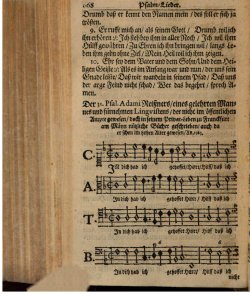
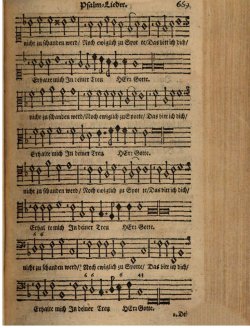
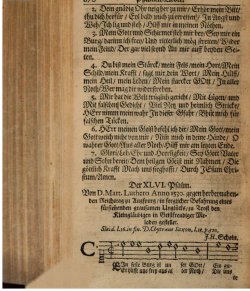
|
|
Melody & text of In dich hab ich gehoffet, Herr (NLGB 254) from the Neu Leipziger Gesangbuch (1682), pp 668-670 |
|
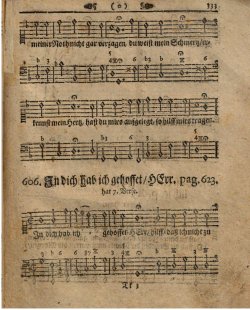
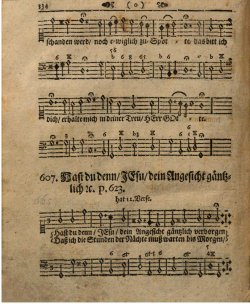
|
|
Melody & verse 1 of In dich hab ich gehoffet, Herr (GH 606) from the Gotha Humnal (1715), pp 333-334 |
|
Melody 2: |
|
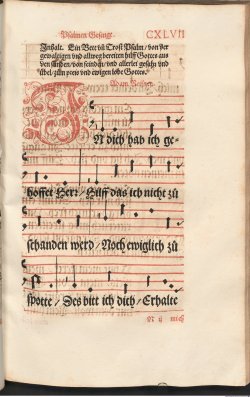
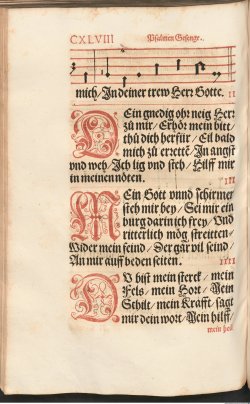
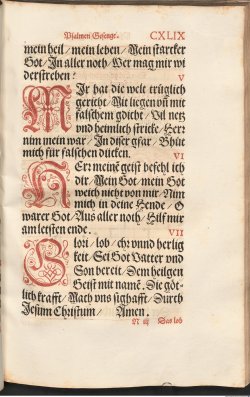
|
|
Melody & terxt of In dich hab ich gehoffet, Herr from Das Gros Kirchen Gesangbuch, Strasburg (1560), pp 147-149 |
| |
| |
|
Use of the Chorale Melody by Bach: |
|
Text 1: In dich hab' ich gehoffet, Herr |
|
Chorale In dich hab ich gehoffet, Herr (Mvt. 6) from Cantata BWV 52 (1726) (verse 1) |
|
Form. Embellished (2 Cor., 3 Ob., Fagotto, Strings, Organ, Continuo). Choralgesange, No. 2122. |
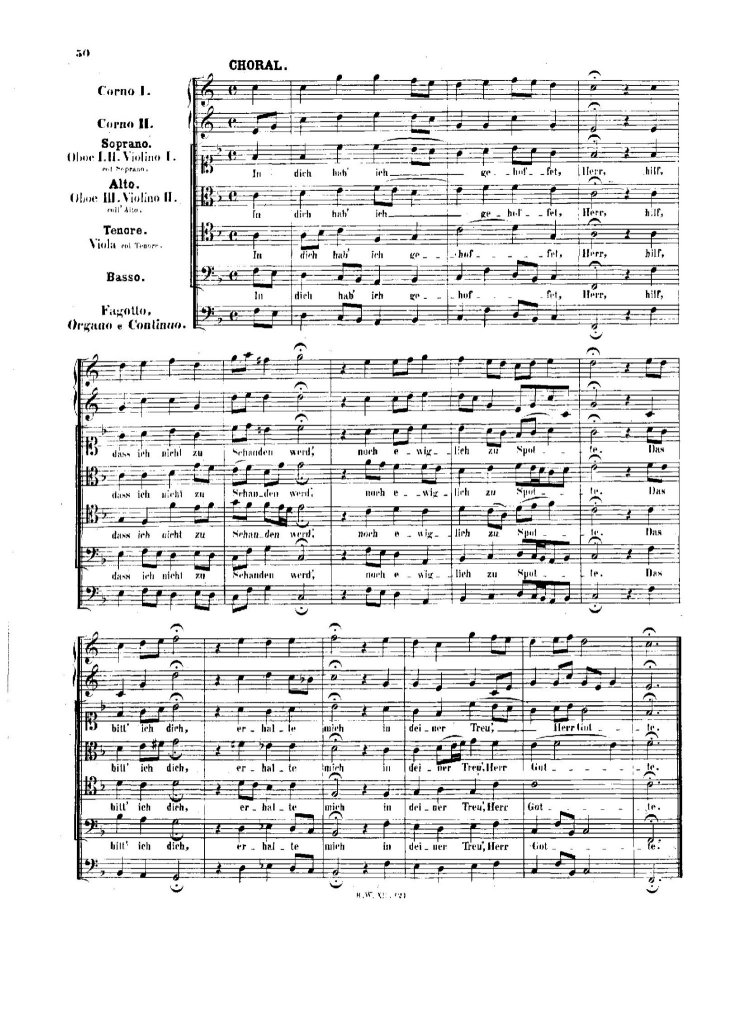 |
|
Chorus (Chorale) Glorie, Lob, Ehr und Herrlichkeit (Mvt. 4) from Cantata BWV 106 (1707) (verse 7) |
|
Form. Choral Fantasia (2 Fl., 2 Viole da gamba, Continuo). |
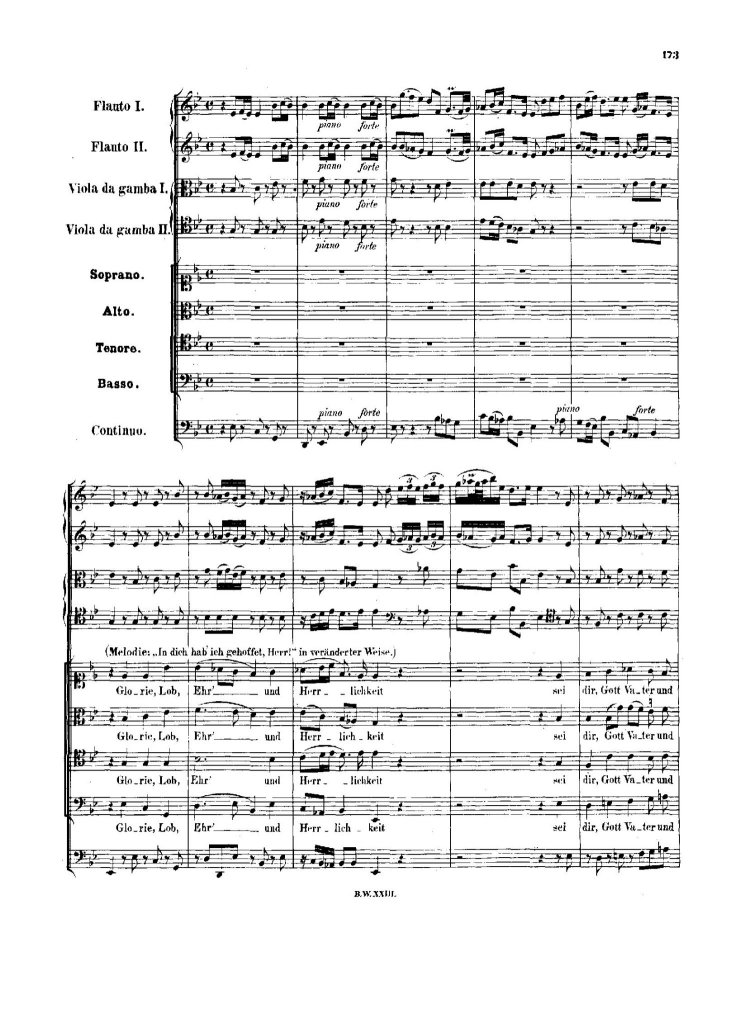
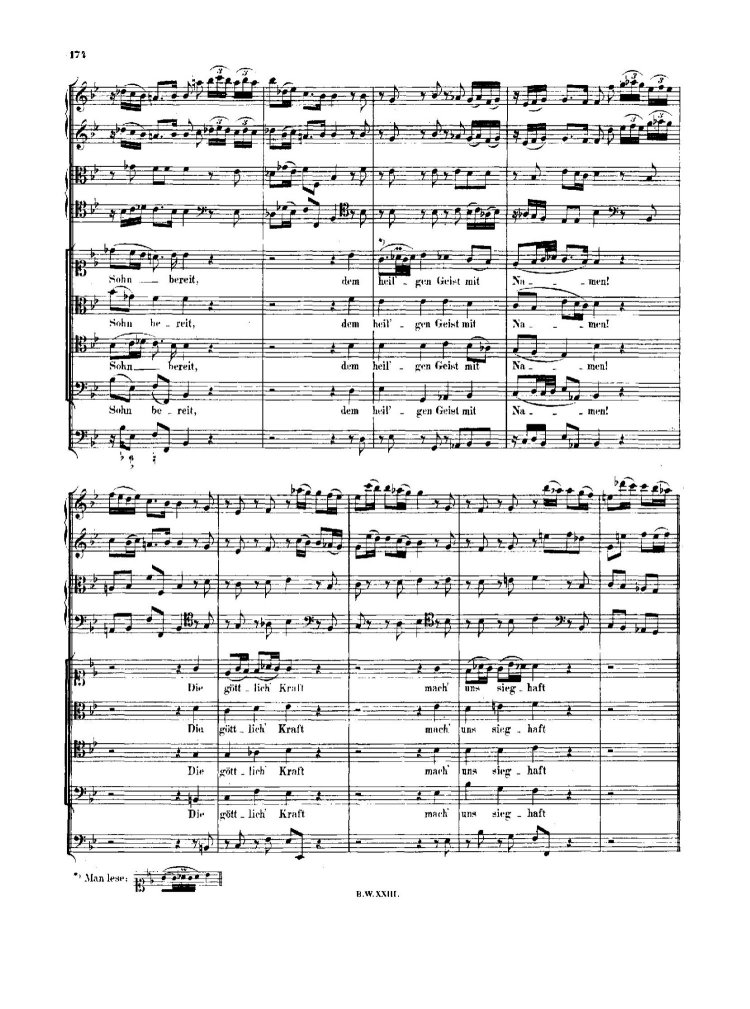
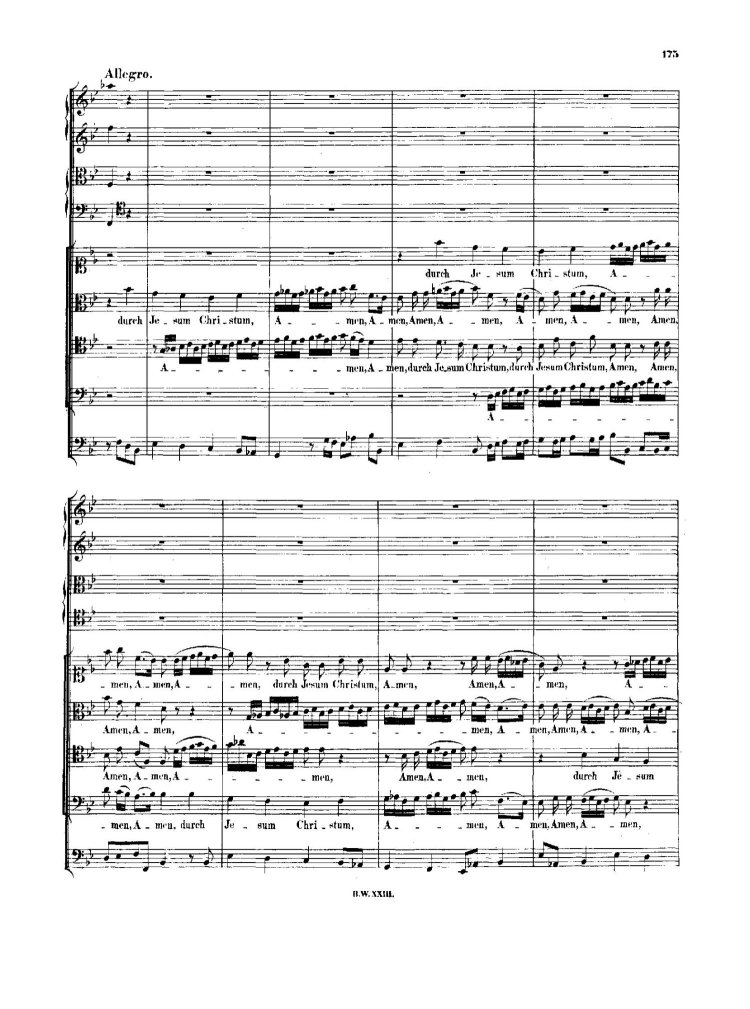
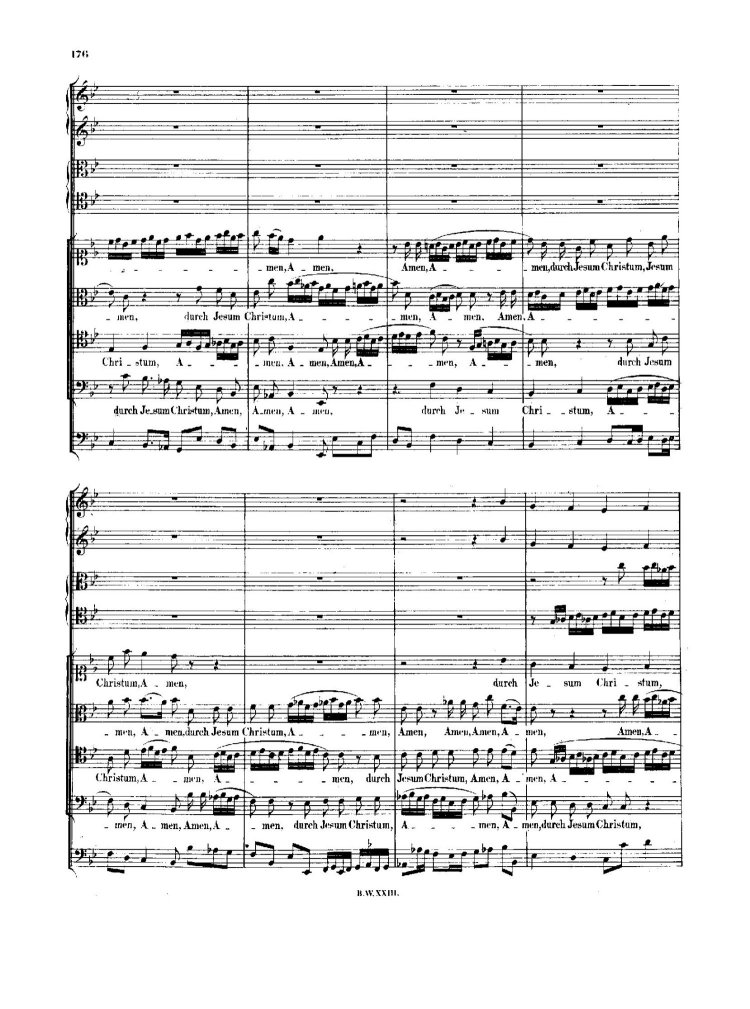
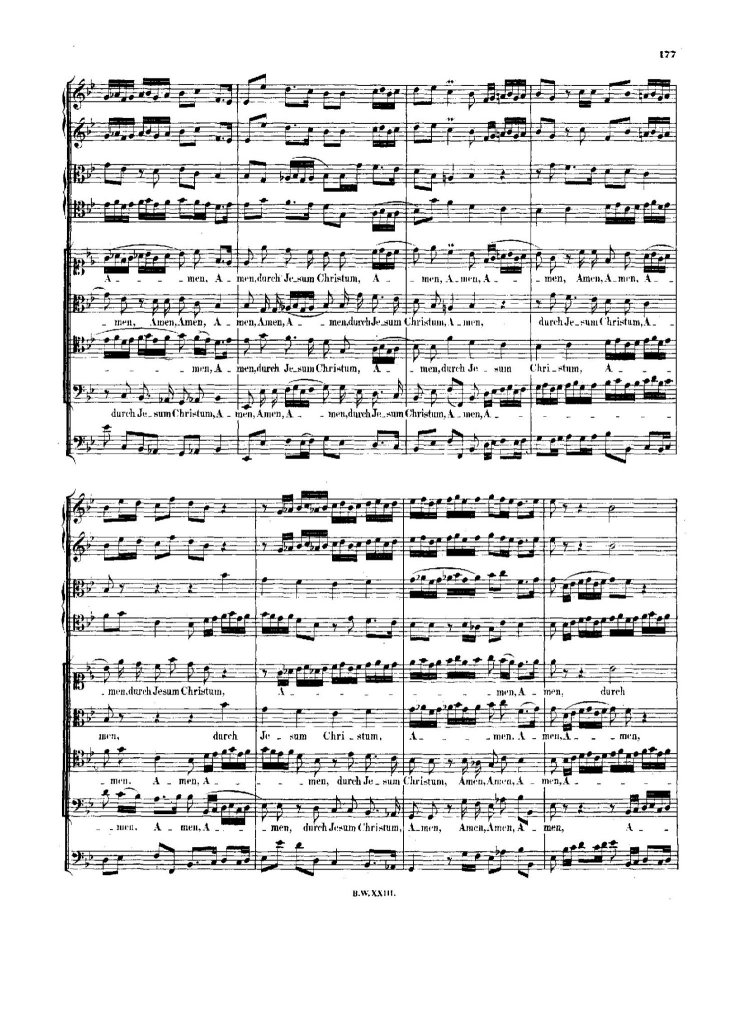
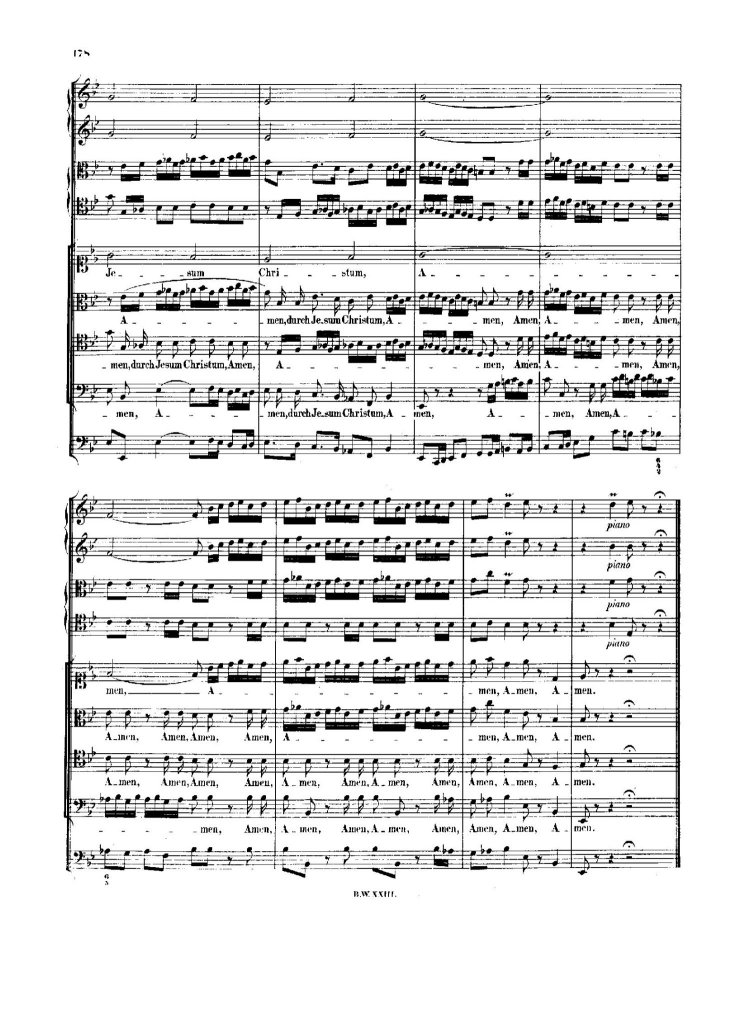 |
|
Chorale Mir hat die Welt trüglich gericht' (Mvt. 32) from Matthäus-Passion BWV 244 (1727) (verse 5)
Ref: RE 118; Br 118; Birnstiel 122; Fasch p.117 |
|
Form. Simple (2 Fl., 2 Ob., Strings, Organ, and Continuo). |
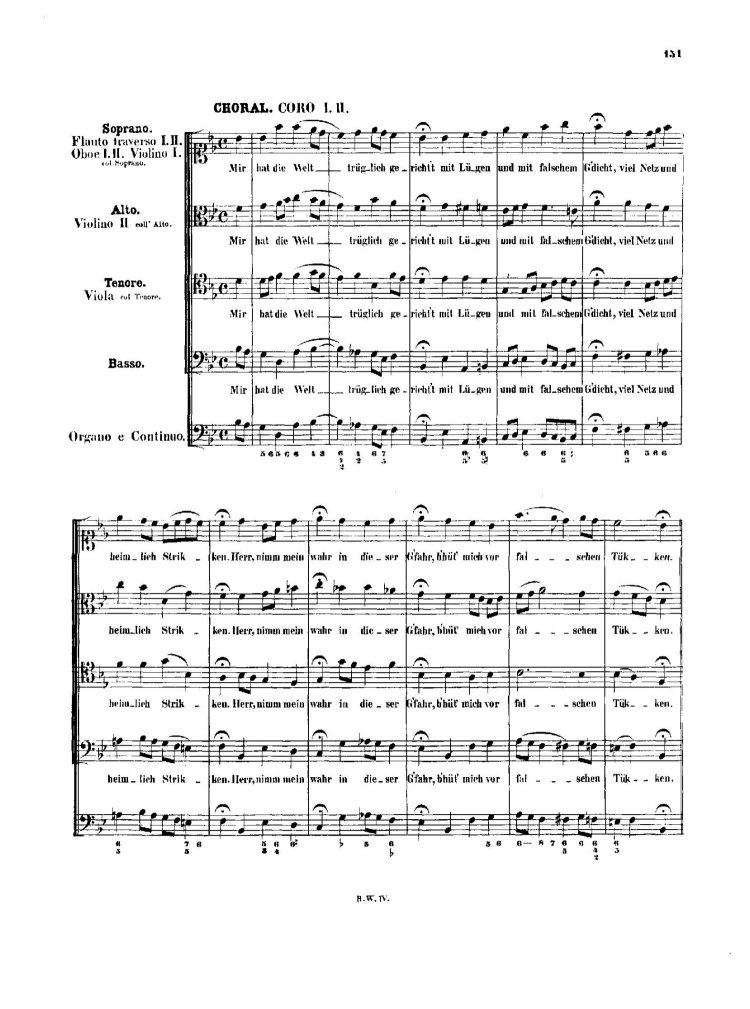 |
|
Text 2: Nun, liebe Seel, nun ist es Zeit |
|
Chorale Dein glanz all' finsterniß verzehr (Mvt. 4 (46)) from Weihnachts-Oratorium BWV 248/5 (1734) (verse 6)
Ref: RE 77; Br 77; Birnstiel 81; Dietel 126; Levy-Mendelssohn 52; Fasch p.116; CST 194 |
|
Form. Simple (Instrumentation: Colla parte - S: violin 1, oboe d’amore 1 & 2. A: violin 2. T: viola. B: organ, continuo). |
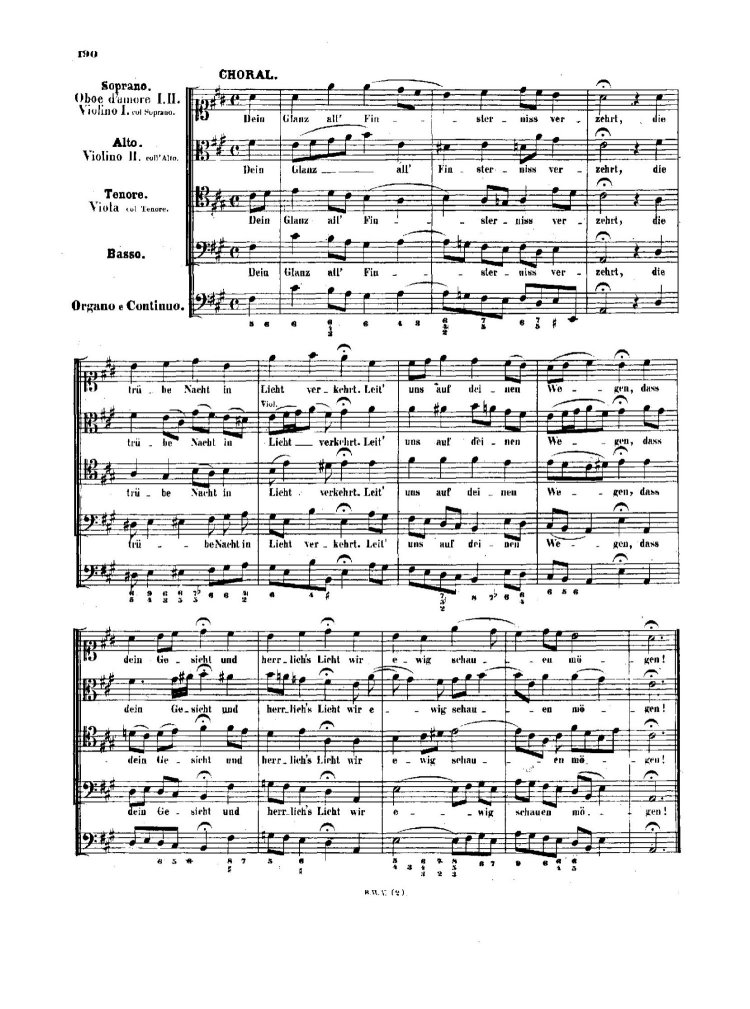 |
|
Untexted: |
|
Adam Reusner’s hymn, “In dich hab’ ich gehoffet, Herr,” based on Psalm 31, was first published in 1533. In the 16th century two tunes attached themselves to it, both of which J.S. Bach uses. |
|
Melody 2: |
|
Chorale Prelude In dich hab ich gehoffet, Herr, BWV 640 (Orgelbüclein) |
|
The movement is the second in the “In Time of Trouble” section of the Orgelbuchlein. It is described as “alio modo,” i.e. the melody J.S. Bach uses is different from that to which the hymn is set in Witt (No. 606). J.S. Bach’s tune, a pre-Reformation Easter melody, occurs in a 15th century ms. now in the Royal Library, Berlin, set to the hymn “Christ ist erstanden” or “Christus ist erstanden.” It is found in print, set to the latter hymn, in 1536. In 1555 Valentin Triller, describing it as old and well-known, set it to the Easter hymn “Erstanden ist uns Jesus Christ.” Five years later, with an altered last line, the tune was attached to Adam Reusner’s “In dich hab’ ich gehoffet, Herr,” in Martin Bucer: Das Gros Kirchen Gesangbuch (Strasburg, 1560) the Strasbourg Gros Kirchen Gesangbuch (1560). The Easter associations of the tune throw light upon J.S. Bach’s treatment of it in this movement. |
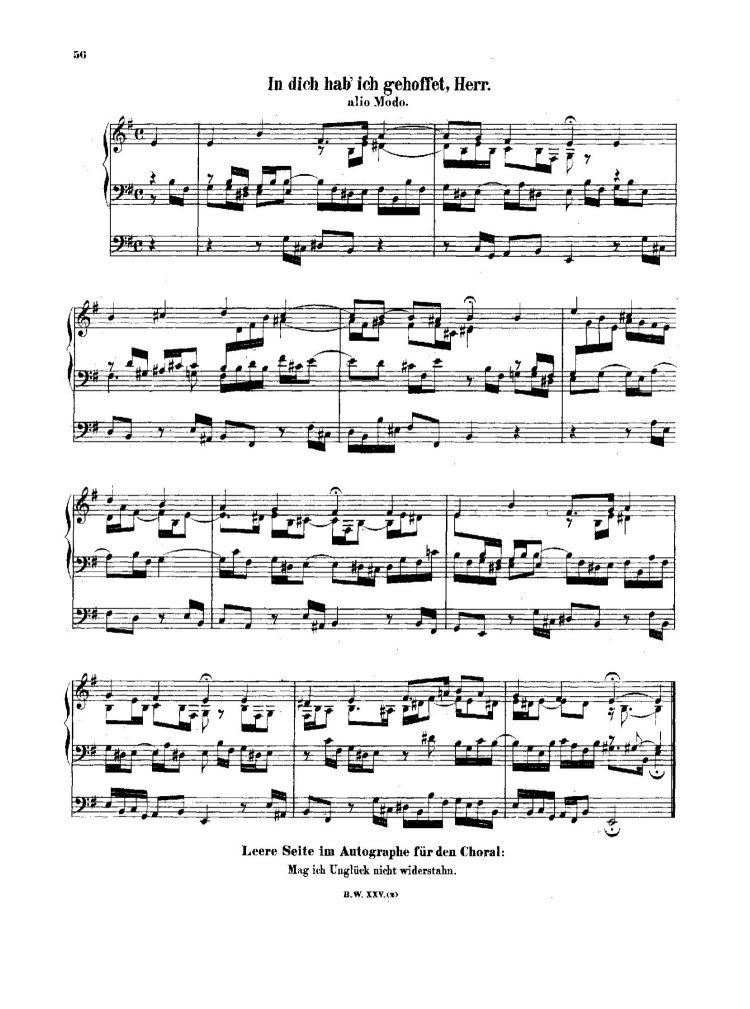 |
|
Melody 1: |
|
Chorale Prelude In dich hab ich gehoffet, Herr, BWV 712 (Kirnberger) |
|
The second of the two melodies is used in this Fughetta. The tune (supra) by Sethus Calvisius, one of J.S. Bach’s predecessors in the Cantorate of St Thomas’, Leipzig, was first published in association with Adam Reusner’s hyin 1581. Elsewhere J.S. Bach uses it in the St Matthew Passion (BWV 244) (1729), No. 38; Christmas Oratorio (BWV 248) (1734), No. 46; Cantatas BWV 52, BWV 106 (1711-c. 1730); Choralgesänge, No. 212. His melodic text is practically invariable and shows marked divergencies from the 1581 form. His first phrase is found in Witt (No. 606). His closing cadence is in Johann Hermann Schein (1627). He differs from Witt in his treatment of phrases 4 and 5, and his version is not traceable in Zahn. Perhaps it is his own. Only in the Fughetta (N. xviii. 59) does he follow the original and Witt in those phrases, with a single variation - B flat for A as the first note of phrase 5 (the second note of line 3 supra).
In this movement, as in No. 69 supra, J.S. Bach’s exegesis of A. Reusner’s hymn does not travel beyond the first line of stanza i. It exhibits a mood of confidence and trust which this happy Fughetta reflects. Copies of it are among the Kirnberger, Voss, and Oley mss.
Source: Charles Sanford Terry: Johann Sebastian Bach, Bach’s Chorals, vol. 3 The Hymns and Hymn Melodies of the Organ Works [1921], PP 196-198 |
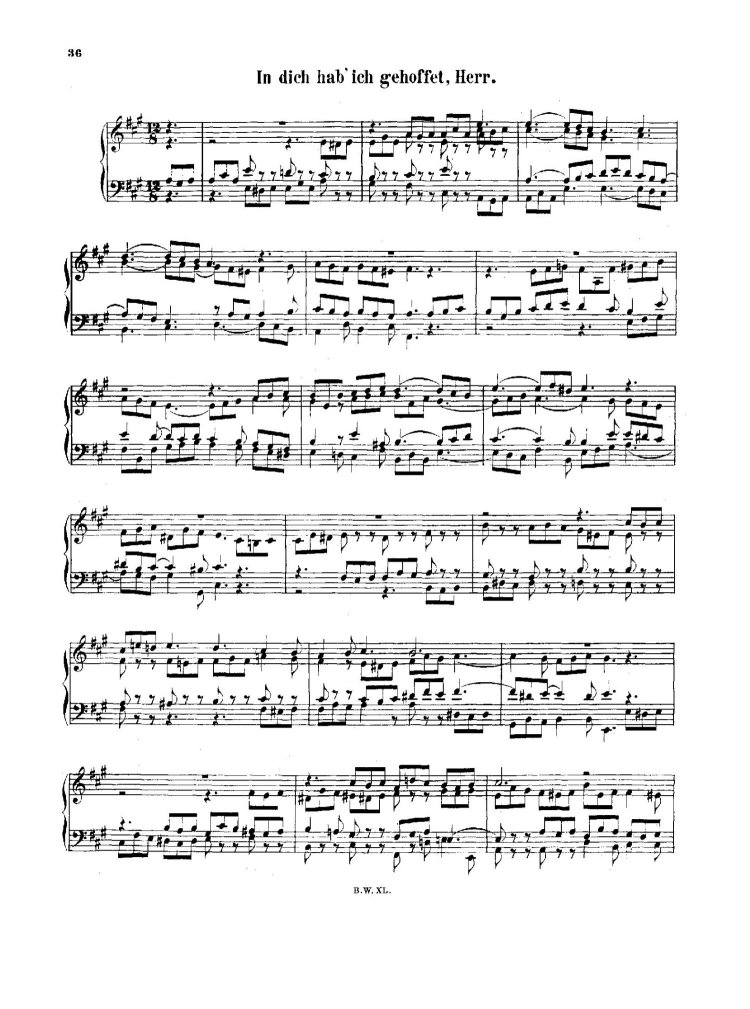
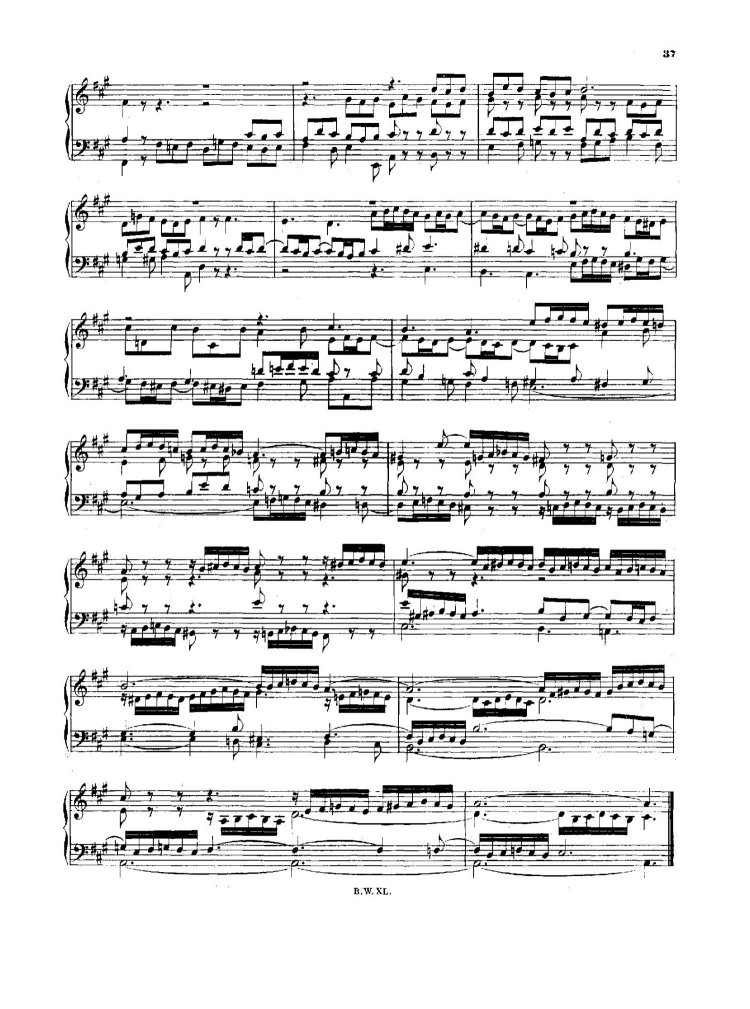 |
|
Use of the Chorale Melody by other composers: |
| |
| |
|
Sources: Bach Digital; BGA; Zahn; BCML discussions on BCW; Charles Sanford Terry's Bach Chorals books
Photos from Gottfried Vopelius: Neu Leipziger Gesangbuch (Vopelius 1682), Christian Friedrich Witt: Psalmodia Sacra, Oder: Andächtige und schöne Gesänge… (Gotha Hymnal, 1715), and Martin Bucer: Das Gros Kirchen Gesangbuch (Strasburg, 1560), were taken from digital copies of the books downloaded from Bayerische Staatsbibliothek München. These copies are Out of copyright - non commercial re-use (Europeana Rights).
Prepared by Aryeh Oron (October 2018) |